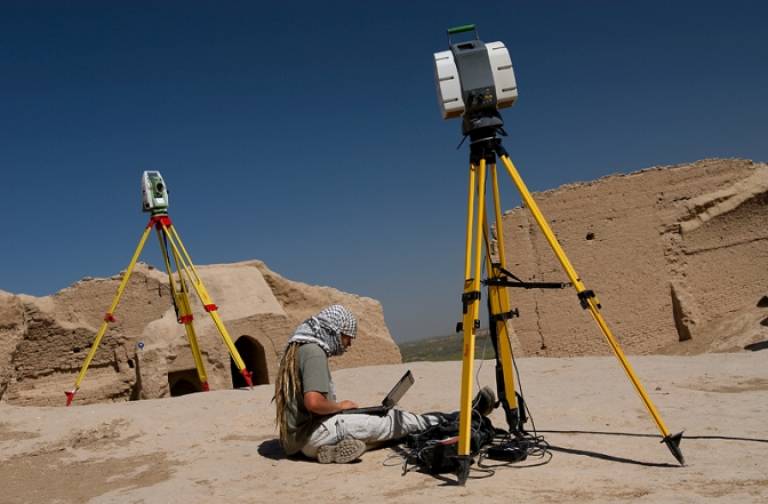New digital platform to protect cultural heritage
5 July 2022
The Central Asian Archaeological Landscapes project, led by Tim Williams (UCL Institute of Archaeology), has been working with partner institutions across central Asia to develop a comprehensive digital inventory of the area.

Archaeological sites in central Asia date back thousands of years and range from megacities to religious sites, nomadic camps and burial mounds to mountain forts and complex water management systems. However many of these sites are under threat from the climate crisis, urbanisation and changing agricultural practices, and are yet to be documented.
The Central Asian Archaeological Landscapes (CAAL) project - made possible by the generosity of Arcadia, a charitable fund of Lisbet Rausing and Peter Baldwin - is a partnership between institutions from the Republic of Kazakhstan, Kyrgyz Republic, Republic of Tajikistan, Turkmenistan, Republic of Uzbekistan, and the People's Republic of China (Xinjiang Uyghur Autonomous Region) as well as the International Institute for Central Asian Studies, based in Samarkand, and the ICOMOS International Conservation Centre Xi'an.
The project has created an online digital inventory enabling a better understanding of the full range of archaeological heritage distributed across the region, fostering its management and protection.The multinational and multidisciplinary team have been digitising existing archives and records, to consolidate information held by regional institutions and research centres into a single multilingual catalogue.
This work has been enhanced by new research using a combination of high resolution photographic and satellite imagery, along with ‘on the ground’ field visits. So far, the team has mapped more than 60,000 sites across the central Asian republics (Kazakhstan, Kyrgyzstan, Tajikistan, Turkmenistan and Uzbekistan), as well as the Xinjiang Uyghur Autonomous Region of China, providing a shared resource with multiple layers of data on archaeological heritage, historical and contemporary land use.
As Tim Williams states:
“Many archaeological sites are protected by legislation, but many others are not. Already, by comparing historical Soviet maps from the 1970s and 1980s with current satellite images, we can see that in recent decades many ancient monuments have been destroyed. With our wide network of international partners, we are developing digital tools that will help local agencies to manage cultural heritage in ways that will benefit local people and at the same time protect against threats."
Read more
- UCL Sustainable Development Goals case study
- Digitising endangered archaeological heritage in Central Asia
- CAAL Project website
 Close
Close

